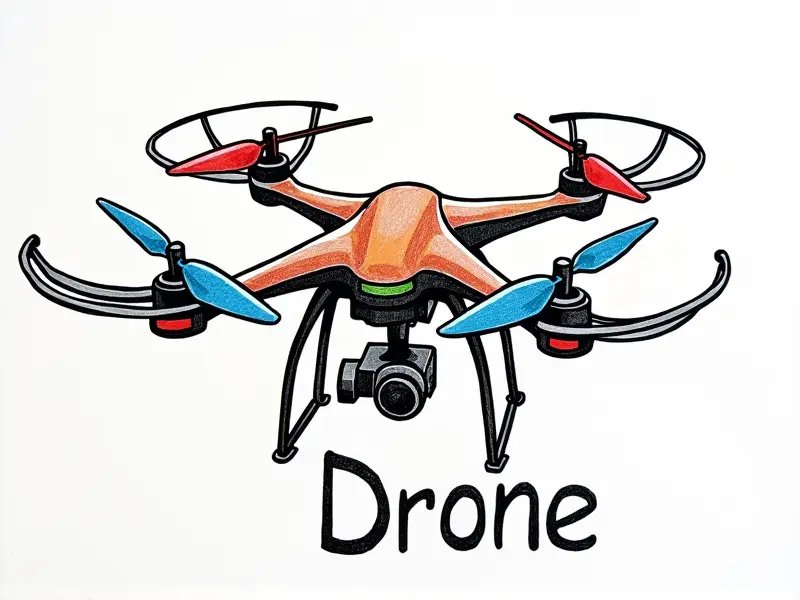RC airplane servos explained

Understanding RC Airplane Servos Basics
RC airplane servos are crucial components that control the movement of various parts on a radio-controlled aircraft. These small motors rotate to adjust the position of flaps, rudder, ailerons, and elevators, enabling precise flight maneuvers. Understanding how these servos work is essential for both beginners and experienced RC pilots.
Each servo consists of a motor that turns a gear train connected to an output shaft. The rotation of this shaft controls the position of control surfaces on your aircraft through linkages or pushrods. Servos are controlled by signals from the receiver, which interprets commands sent via radio frequency (RF) from the transmitter.
Types of Servos for RC Planes
There are several types of servos designed specifically for different applications in RC airplanes:
- Digital Servos: These offer faster response times and higher torque compared to standard analog servos. Digital servos also provide more consistent performance across a wide range of temperatures.
- Tower Hobbies HS-5055MG High Torque Servo: This servo is ideal for larger planes requiring significant force to operate control surfaces.
- Metal Gear Servos: Known for their durability and high torque, metal gear servos are popular choices among RC enthusiasts. They come in various sizes suitable for different aircraft types.
Choosing the Right Servo for Your RC Plane
Selecting the appropriate servo depends on several factors including:
- Aircraft Size and Weight: Larger, heavier planes typically require more powerful servos to handle the increased load.
- Type of Flight: Aerobatic maneuvers demand higher speed and torque compared to casual flying or gliding.
- Budget Constraints: While premium servos offer superior performance, budget-friendly options can still provide adequate functionality for basic needs.
Servo Size Guide for RC Aircraft
The size of a servo is often denoted by its dimensions and weight. Common sizes include:
- Standard Servos (15kg/cm): Suitable for small to medium-sized planes, these servos offer good balance between power and compactness.
- Medium Servos (20-30kg/cm): Ideal for mid-size aircraft that require more torque but still benefit from a smaller form factor.
- Large Servos (45+ kg/cm): Designed for heavy-duty applications such as large-scale planes or high-performance models needing robust control surface actuation.
Servo Torque Explained in RC Planes
Torque is the rotational force a servo can exert, measured in kilogram-centimeters (kg-cm). Higher torque means better ability to move heavy control surfaces. For instance:
- Ailerons and rudder typically require moderate torque.
- Elevators on large planes may need high-torque servos due to increased load.
Upgrading Servos for Better Flight Performance
Upgrading to higher-quality servos can significantly enhance your RC plane's performance:
- Faster Response Time: Improved servo speed allows quicker reaction times, enabling more precise maneuvers.
- Better Durability: High-end servos often feature metal gears and robust construction, ensuring longevity under demanding conditions.
Maintenance Tips for RC Plane Servos
To keep your servos in top condition:
- Regularly inspect the gear train for wear or damage.
- Lubricate moving parts with specialized servo oil to reduce friction and prevent overheating.
- Avoid overloading servos by ensuring proper linkage setup and adjusting control surface travel limits as needed.
Advanced Servo Features for RC Flyers
Some advanced features found in modern servos include:
- Servo Saver Systems: These protect the servo from excessive force by allowing controlled slippage, preventing damage.
- Built-in Batteries: Some high-end models come with integrated batteries for consistent power delivery without external wiring issues.
Servo Speed vs Torque: What Matters Most?
The importance of servo speed versus torque depends on the specific application:
- Torque is critical for handling heavy control surfaces or large-scale models.
- Speed becomes more important for aerobatics and rapid response maneuvers.
Common Issues with RC Airplane Servos
Some frequent problems encountered include:
- Noisy Operation: Excessive noise may indicate worn gears or insufficient lubrication.
- Limited Travel Range: Adjusting the control horns and verifying correct linkage setup can resolve this issue.
Best Servos for High-Performance RC Planes
Selecting high-performance servos involves considering factors such as:
- Hitec HS-755HB Digital Metal Gear Servo: Known for its reliability and excellent torque-to-size ratio.
- Graupner 1380MG Futaba S3203 Compatible: Offers impressive speed and durability, making it a favorite among competitive pilots.
Conclusion
In summary, understanding RC airplane servos is vital for achieving optimal performance in your radio-controlled aircraft. By choosing the right type of servo based on your specific needs, maintaining them properly, and considering advanced features when upgrading, you can significantly enhance both the functionality and enjoyment of flying RC planes.

